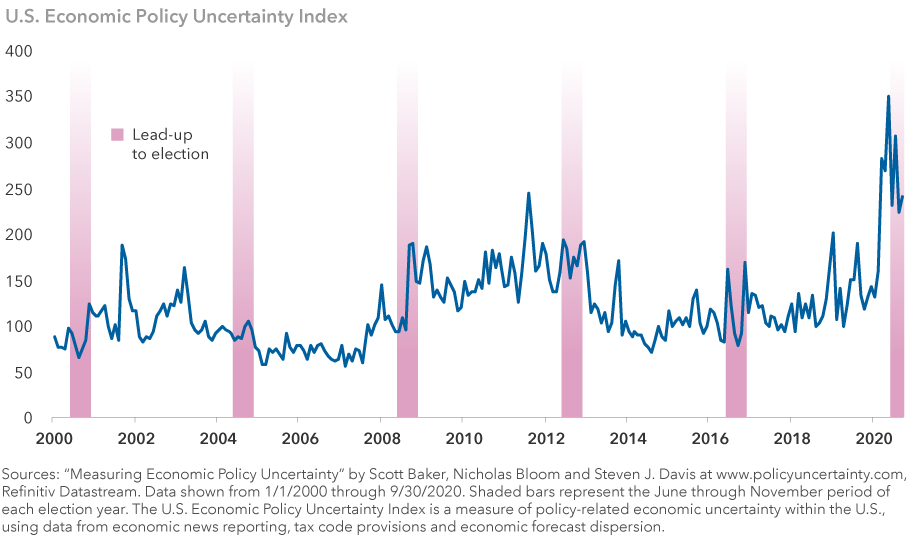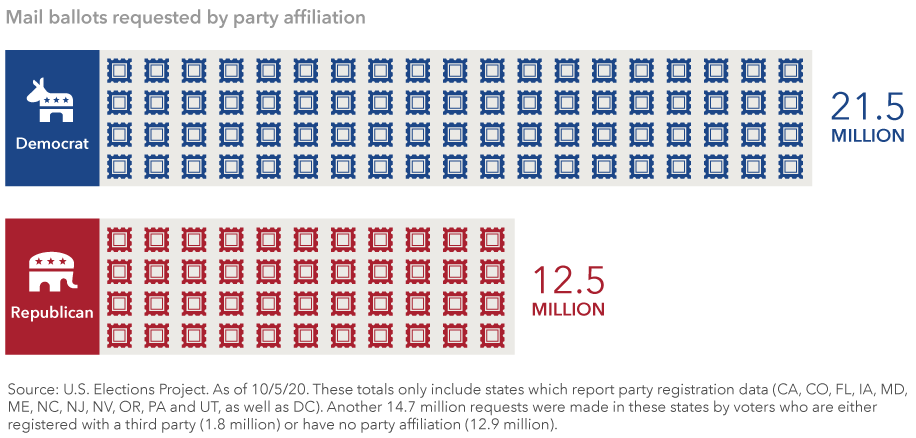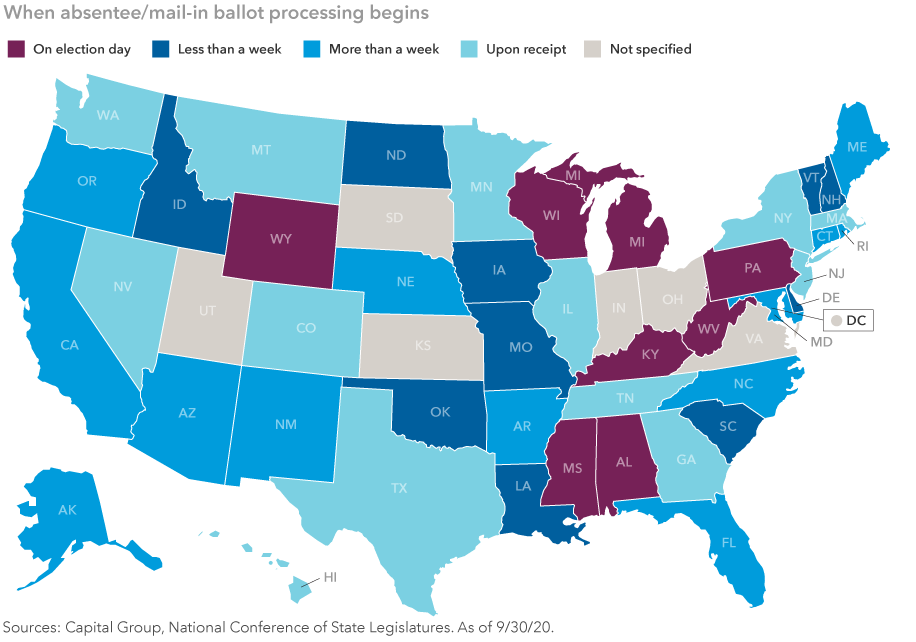Remember all the turmoil over those hanging chads in Florida? The 2020 U.S. presidential election could make that dispute look quaint by comparison. In a year when seemingly everything has gone wrong, it is highly likely that Election Day will add another element of uncertainty to a most uncertain time.
“I've been involved in presidential politics going back to the 1980s, and I have to say this is the most unusual election of my lifetime — and probably anyone’s lifetime who is alive today,” says John Emerson, Vice Chairman of Capital Group International, Inc.SM and a former U.S. Ambassador to Germany.
“We have a pandemic, an economic crisis, civil unrest in the streets and, in the middle of it all,” he adds, “a dispute over a Supreme Court appointment suddenly enters the mix.” The Senate Judiciary Committee is expected to begin confirmation hearings on October 12 for President Donald Trump’s nominee, setting the stage for a partisan battle three weeks before the election.
Adding yet another layer of uncertainty: Last week President Trump and his wife, Melania, tested positive for COVID-19. It remains to be seen how that could impact the campaign but, at a minimum, it places the pandemic back at the center of the race. “Of course, our thoughts are with the President and First Lady wishing them a speedy recovery,” Emerson says.









